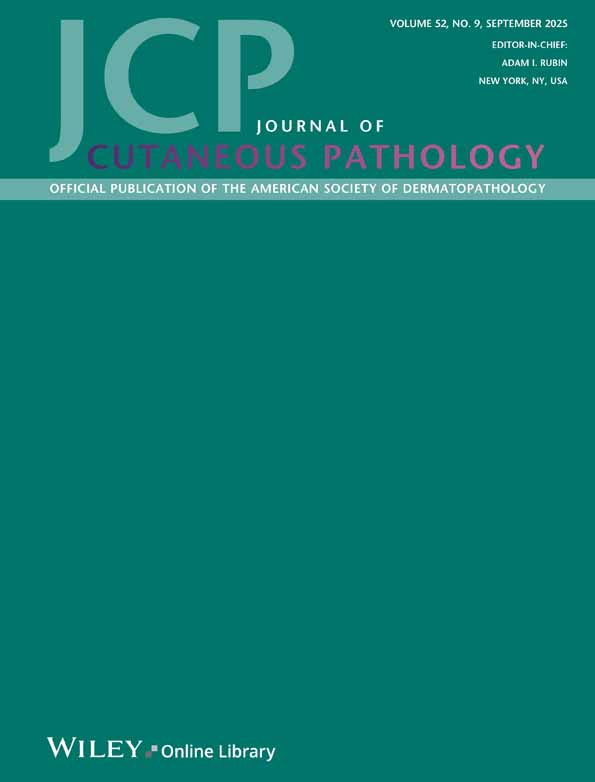T-cell subsets in lesions of systemic and discoid lupus erythematosus
Abstract
In 6 patients with untreated systemic lupus erythematosus (SLE) in the progressive stage, and in 6 with discoid lupus erythematosus (OLE), an analysis of inflammatory infiltrates was performed in situ using the avidin-biotin-peroxidase complex (ABC) method with monoclonal antibodies. In all patients, over 75% of the infiltrates reacted with the pan T-cell antibody OKT3, but only sporadically with that of B-cell OKB7. In addition, a large number of the infiltrates were OKT8-positive, indicating that they were in an activated state. Many OKT8-positive cells were seen infiltrating the epidermis especially in the vicinity of basal keratinocytes. Staining for T-cell subsets revealed that the proportion of OKT8-positive cells (suppressor/ cytotoxic) was from 2 to 3 fold higher than that of OKT4-positive cells (helper/inducer) in lesions of SLE. On the contrary, in OLE, a predominance of OKT4-pos-itive cells (the OKT4/OKT8 ratio was from 1:1 to 3:1) was observed. Thus, our results provide further evidence that these 2 main types of LE show quite contrary findings on immunohistochemical analysis of T-cell subsets, and that besides the humoral immune mechanism, the cell-mediated immune mechanism may be involved in the pathogenesis of these disorders.




